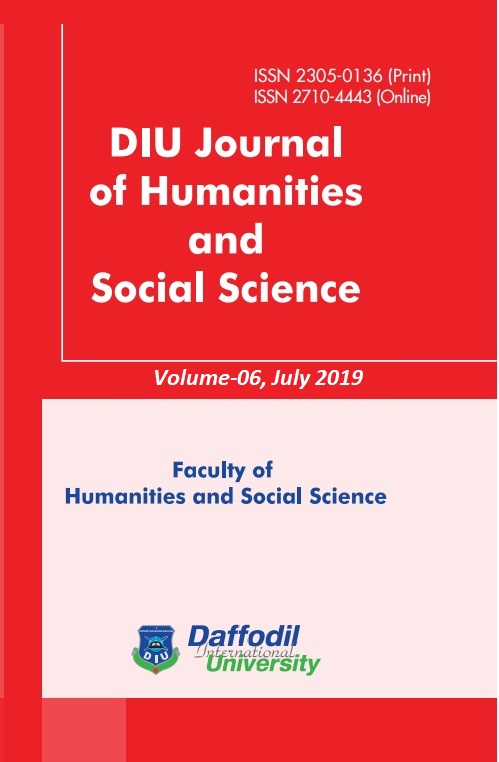Hot or Not? a Taxonomic Exploratory Case Study for ELE at Tertiary Level Bangladesh
DOI:
https://doi.org/10.36481/diujhss.v06i.976nd647Keywords:
English Language, TaxonomyAbstract
It is generally perceived that learners being taught for years are found inefficient to fonnulate, develop and understand the practical problems at their workplace (BBS, 2018 cited in Tuhin. 2018; Fayaaz, Danish & Hassan, 2019; Neazy, 2019). Not surprisingly, much of these skills are already categorized as higher-order thinking (after this NOV skills in Bloom (1956) & Original Taxonomy (hereafter 07) and the widely accepted Revised Taxonomy (henceforth RT) provided by Anderson (2001). Students and graduates interviewed for HEQEP (Higher Education Quality Enhancement Project) report 2018 identified their ability to communicate in English as the second most important skill to be acquired by a graduate (p.9). While the employers, interviewed at the same, shared that the two basic skills that they consider when hiring a graduate am academic qualification and cognitive skills (p. 12). The recent World Bank report (2019) also stated that only a handful of private universities are experimenting with courses to provide HOT and soft skills among students (p.40). The current paper, therefore, took on the task to investigate the taxonomic value of the existing course objectives and question papers, offered for the first-semester students offspring 2019 at an English department purposively, based on the framework provided by Krathwohl (2002) in order to identify the cognitive range. The findings suggest the scope officer insight required from the academia for enhanced cognitive ability at teaching, learning, and assessment which will amplify English literacy among our graduates.
Downloads
Downloads
Published
Issue
Section
License
Copyright (c) 2024 DIU Journal of Humanities and Social Science

This work is licensed under a Creative Commons Attribution-NonCommercial 4.0 International License.




